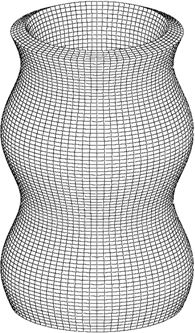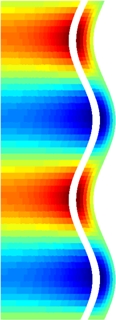
Computational & Technology Resources
an online resource for computational,
engineering & technology publications
engineering & technology publications
Civil-Comp Proceedings
ISSN 1759-3433
ISSN 1759-3433
CCP: 83
PROCEEDINGS OF THE EIGHTH INTERNATIONAL CONFERENCE ON COMPUTATIONAL STRUCTURES TECHNOLOGY
PROCEEDINGS OF THE EIGHTH INTERNATIONAL CONFERENCE ON COMPUTATIONAL STRUCTURES TECHNOLOGY
Edited by: B.H.V. Topping, G. Montero and R. Montenegro
Paper 103
A State Space Method for Free-Vibration Analysis of a Radially Polarized Laminated Piezoelectric Cylinder Filled with Fluid
J.F. Deü and W. Larbi
Structural Mechanics and Coupled Systems Laboratory, Conservatoire National des Arts et Métiers, Paris, France
Full Bibliographic Reference for this paper
J.F. Deü, W. Larbi, "A State Space Method for Free-Vibration Analysis of a Radially Polarized Laminated Piezoelectric Cylinder Filled with Fluid", in B.H.V. Topping, G. Montero, R. Montenegro, (Editors), "Proceedings of the Eighth International Conference on Computational Structures Technology", Civil-Comp Press, Stirlingshire, UK, Paper 103, 2006. doi:10.4203/ccp.83.103
Keywords: free vibration, state space method, adaptive structure, piezoelectric, laminated composite cylinder, fluid-structure interaction.
Summary
This paper presents a three-dimensional exact mixed state space solution, as well
as a parametric analysis, for the free-vibration of a simply-supported arbitrarily thick
laminated piezoceramic cylinder completely filled with fluid. The piezoelectric
layers of the laminated cylinder are supposed to be polarized in the radial direction
and the fluid is considered inviscid and either compressible or incompressible. The
proposed formulation, inspired by that one developed for the free-vibration analysis
of laminated plates with embedded piezoceramic layers [1], retains, as state
variables, the standard mechanical displacements and transverse stresses. These
variables are augmented, for the piezoelectric case, by electric transverse
displacement and potential, and for the fluid-structure coupled problem, by the fluid
pressure. The effect of internal fluid is taken into consideration by imposing a
relationship between the transverse stress and the radial displacement deduced from the
classical continuity conditions at the interface. Frequency and mode shapes are
computed for different electrical boundary conditions at the inner and outer
cylindrical surfaces of the piezoelectric layers. A detailed parametric analysis is then
conducted to show the influence of the radius-to-thickness and the length-to-thickness ratios,
the electric boundary conditions and the fluid effect. Concerning the piezoelectric aspect, it
was found that the distribution of the electric state variables across the thickness of
the cylinder depends strongly on the electric boundary conditions and the mode type.
Moreover, contrary to the common practice of the mechanical community, the
weak difference between short- and open-circuit natural frequencies should not be
neglected. It might be used to assess the piezoelectric effect through the so-called
effective modal electromechanical coupling coefficient whose level was found to
depend on the mode type. This exact solution and the corresponding results can be
used to validate other analytical or numerical solutions. Moreover, such a
formulation can be used (i) to develop accurate piezoelectric shell finite elements,
and (ii) to investigate the effects of various parameters on the natural frequencies
and mode shapes of the fluid-piezoelectric structure coupled system.
References
- 1
- J.F. Deü and A. Benjeddou, "Free-vibration analysis of laminated plates with embedded shear-mode piezoceramic layers", International Journal of Solids and Structures, 42(7), 2059-2088, 2005. doi:10.1016/j.ijsolstr.2004.09.003
purchase the full-text of this paper (price £20)
go to the previous paper
go to the next paper
return to the table of contents
return to the book description
purchase this book (price £140 +P&P)

